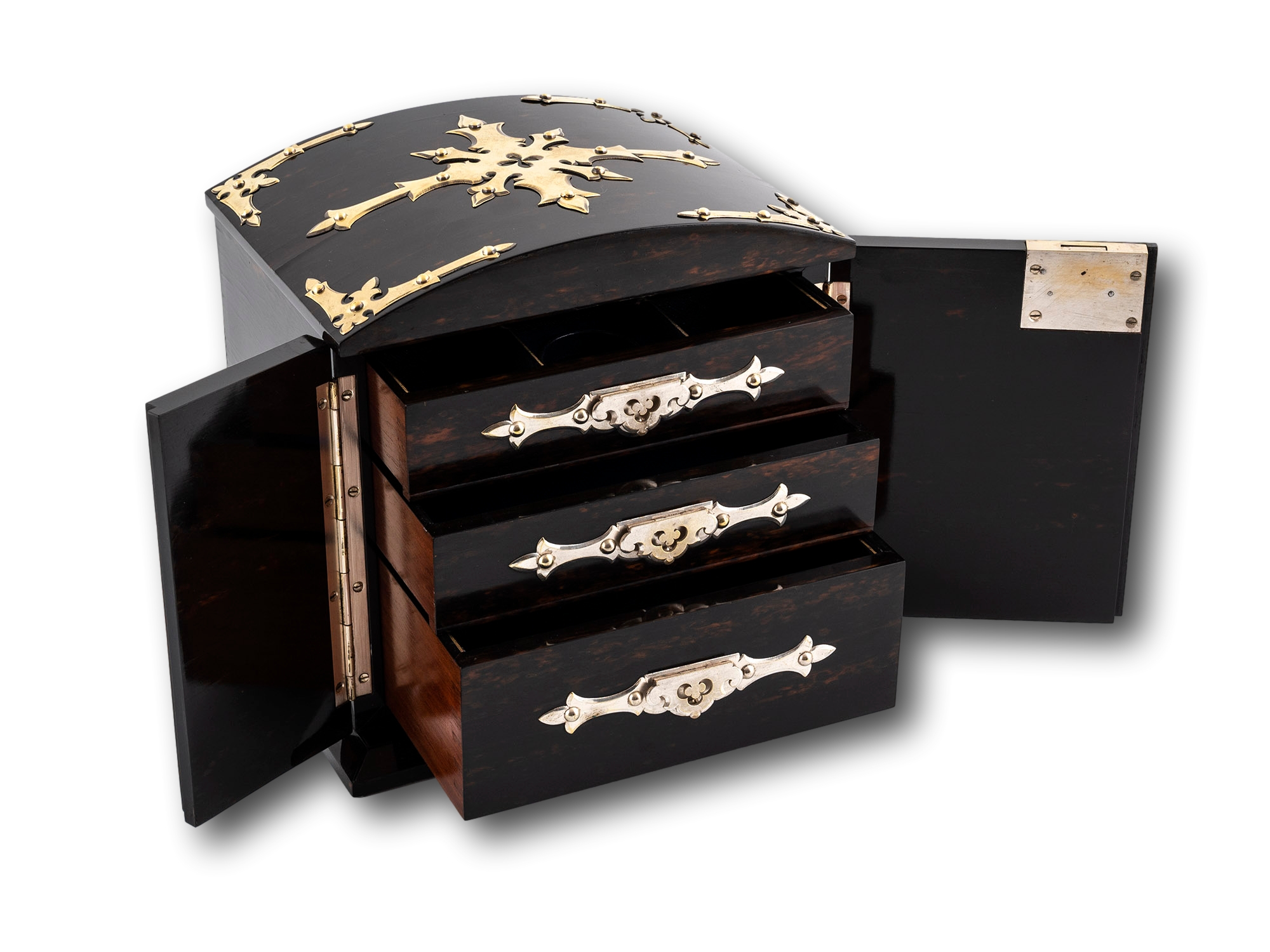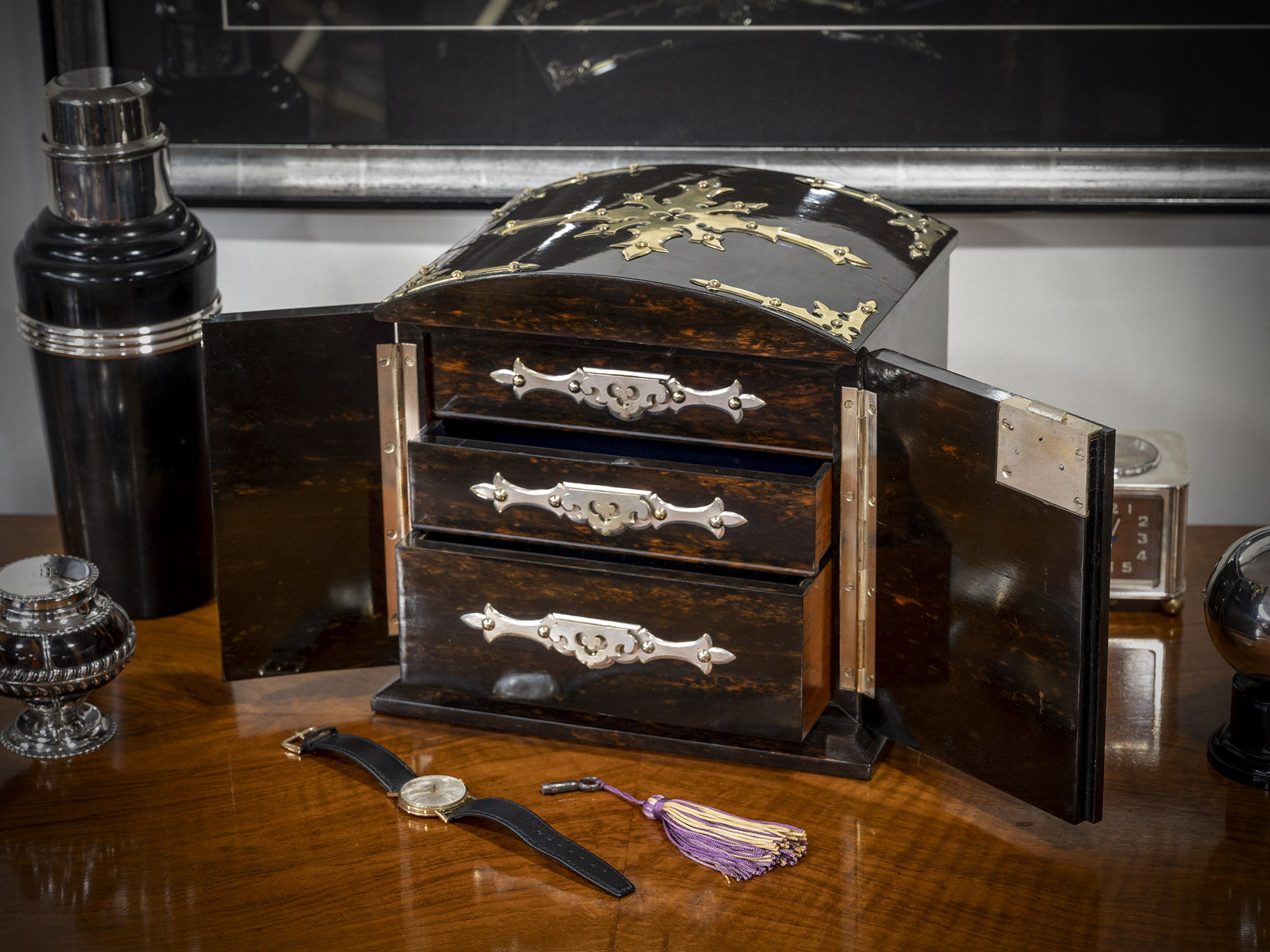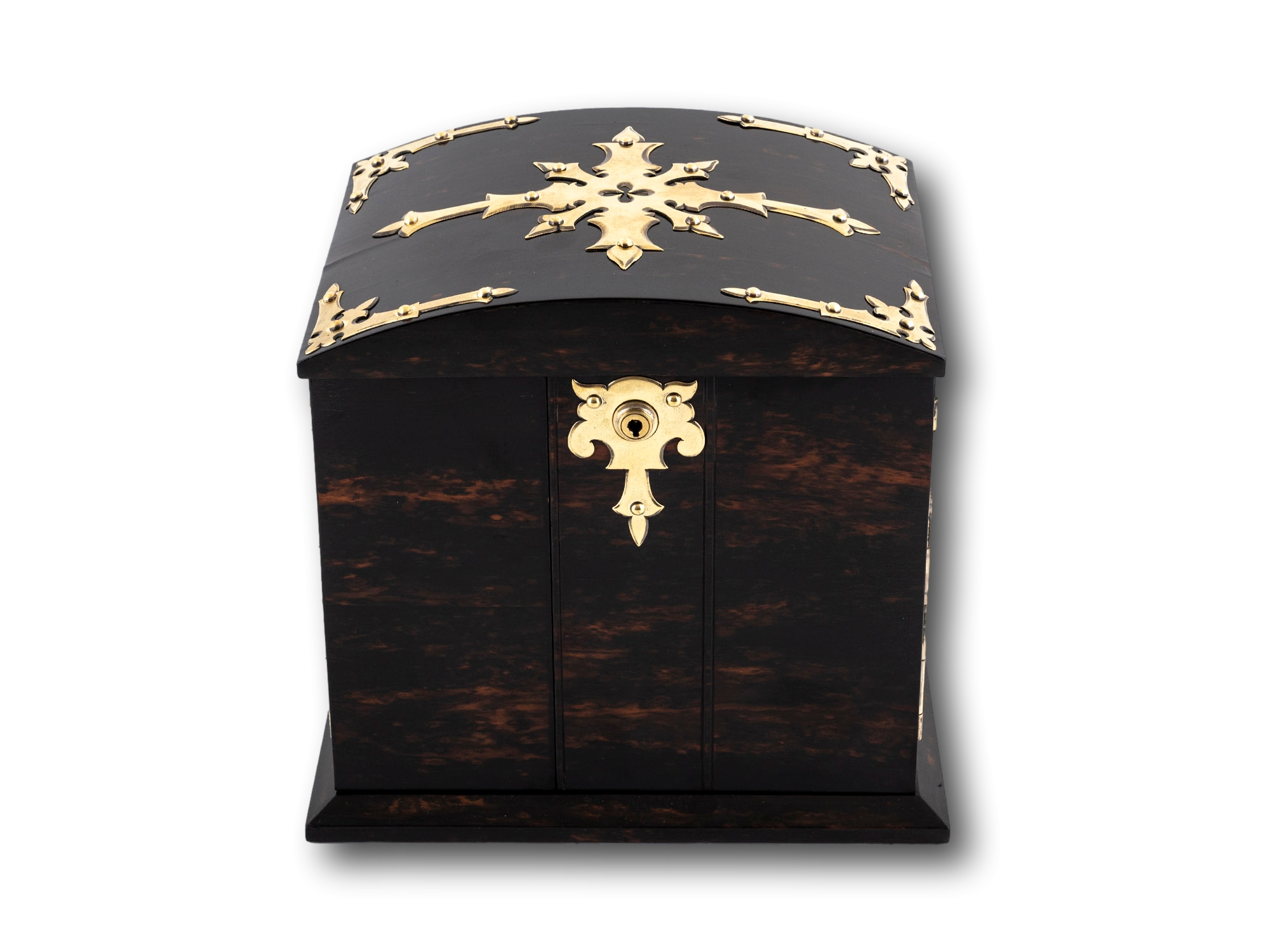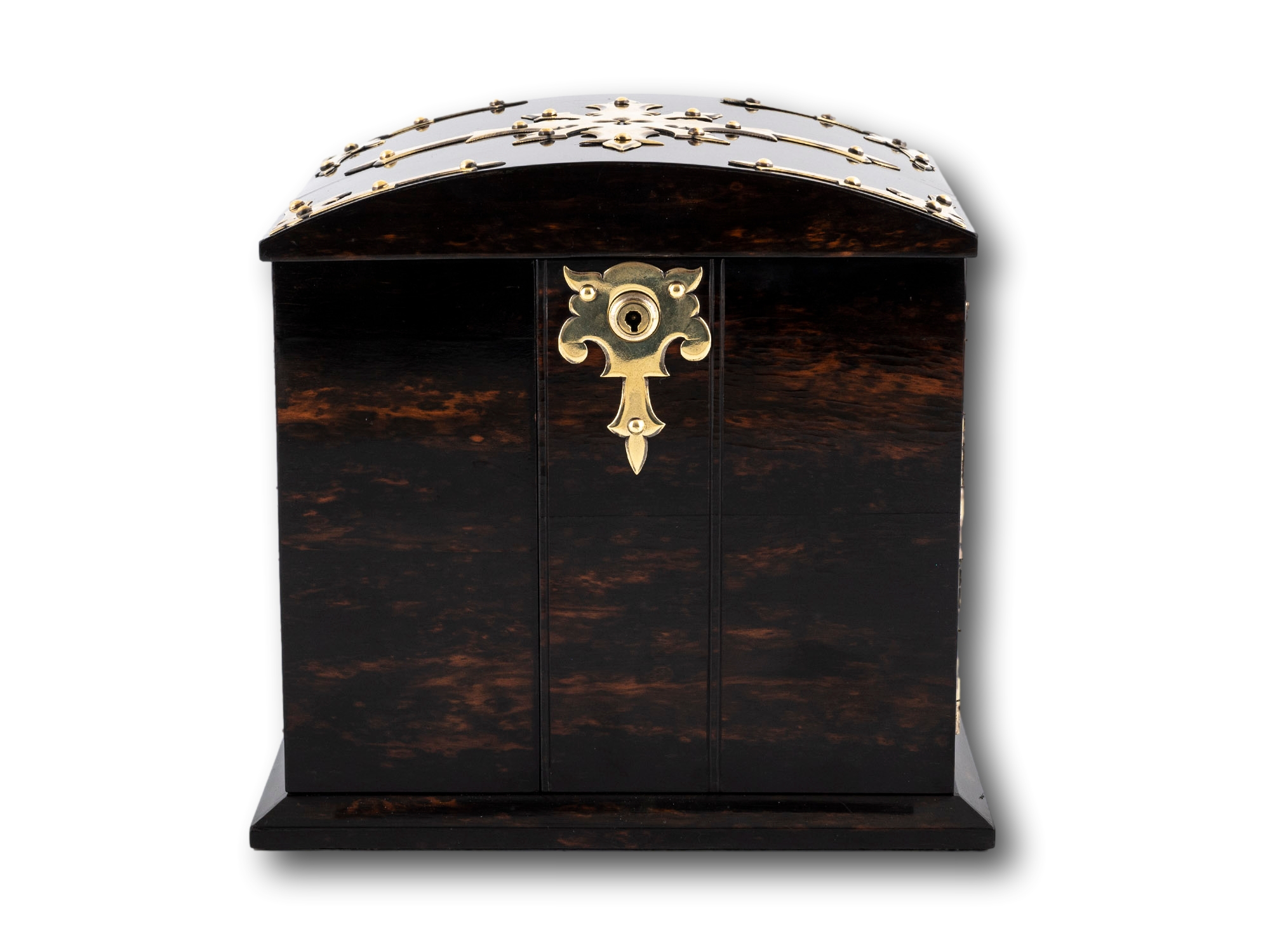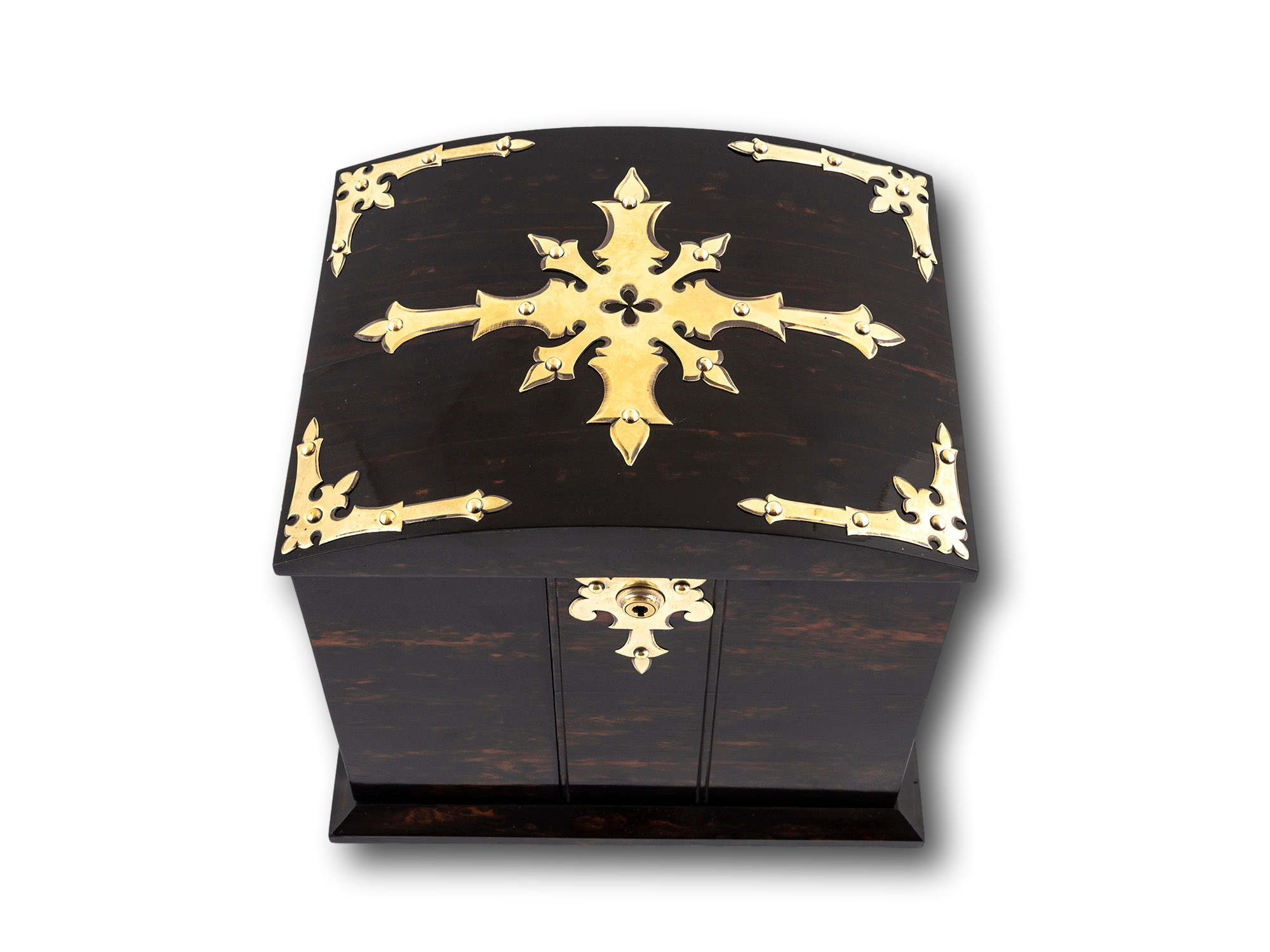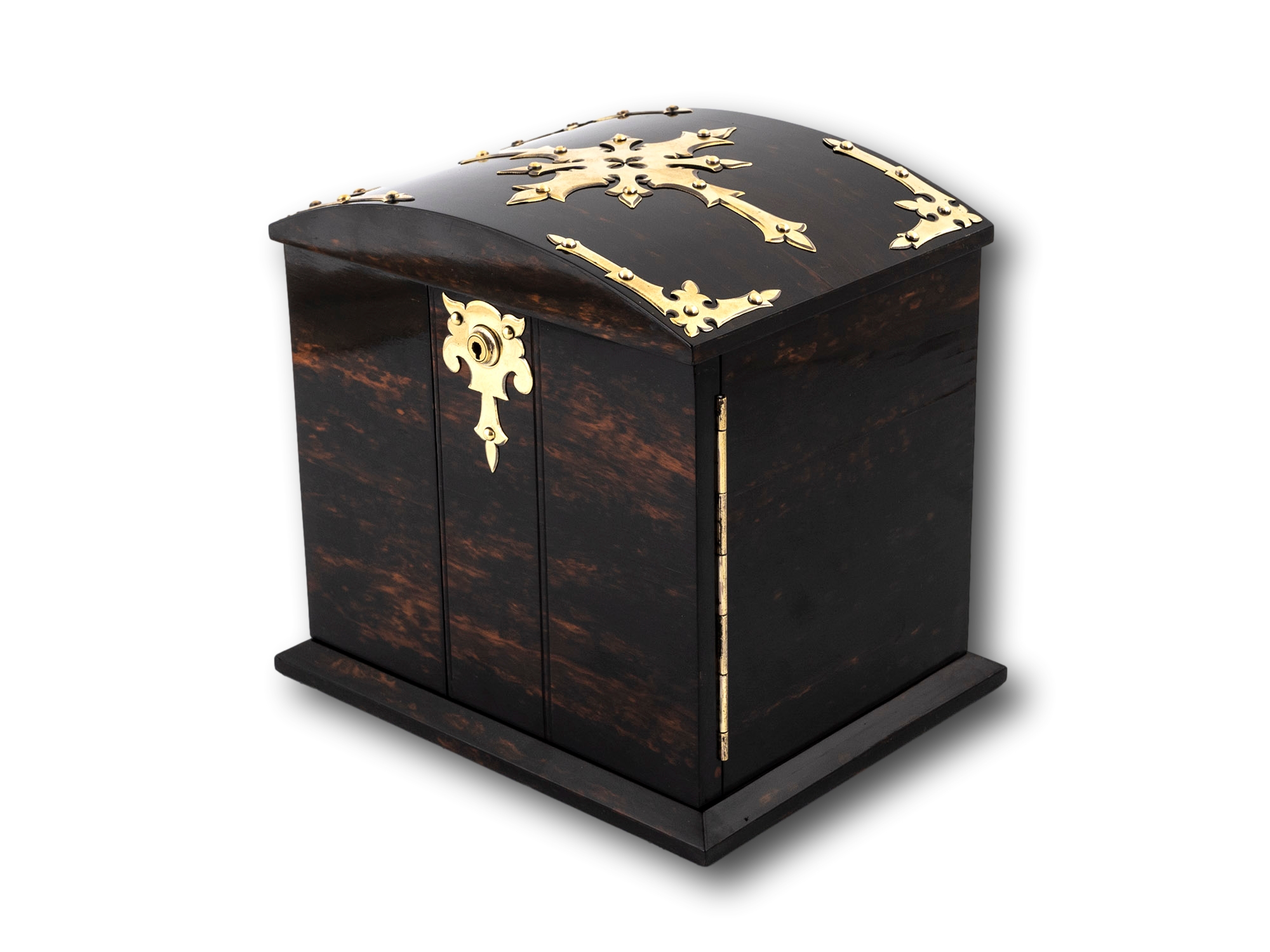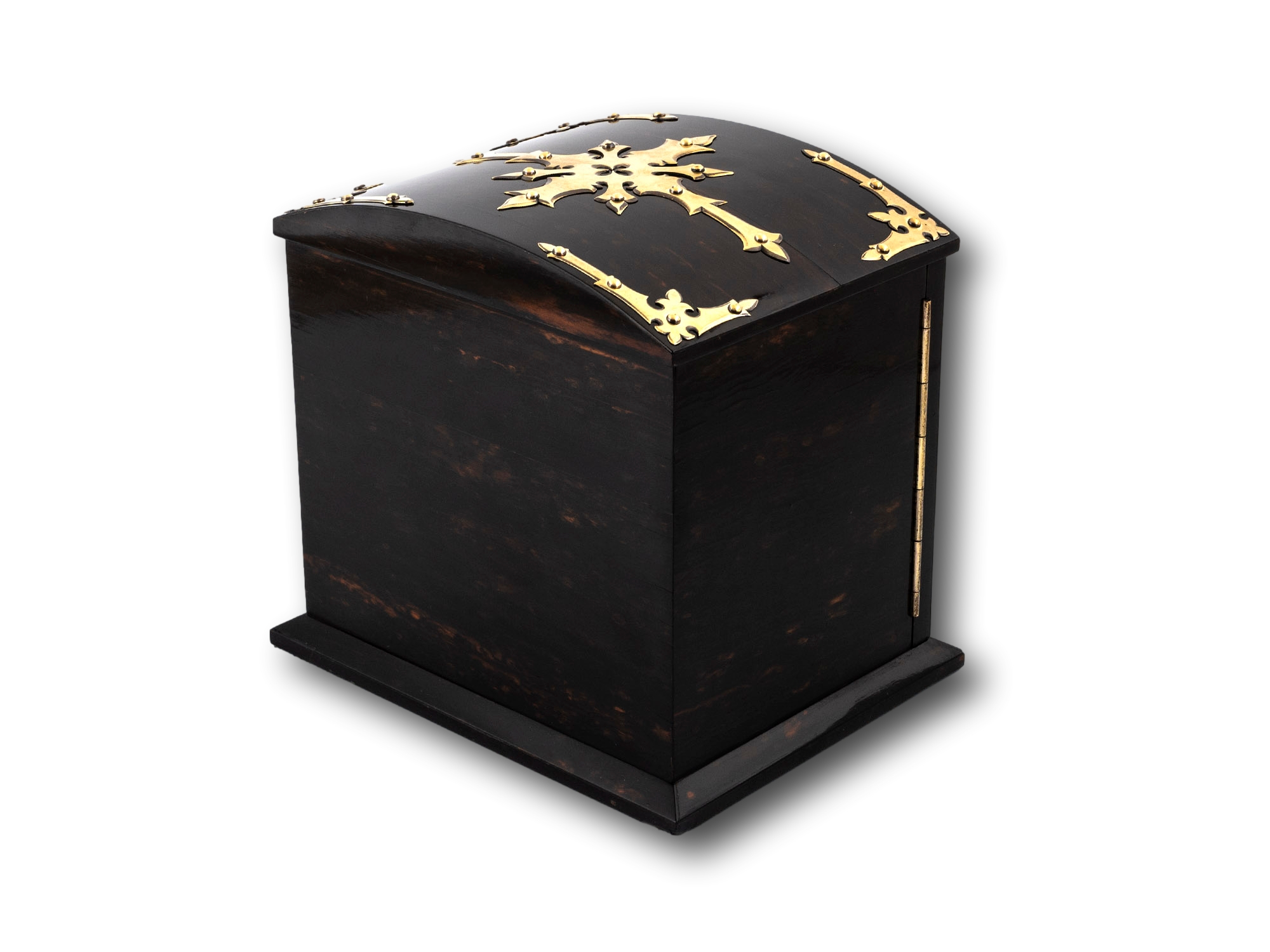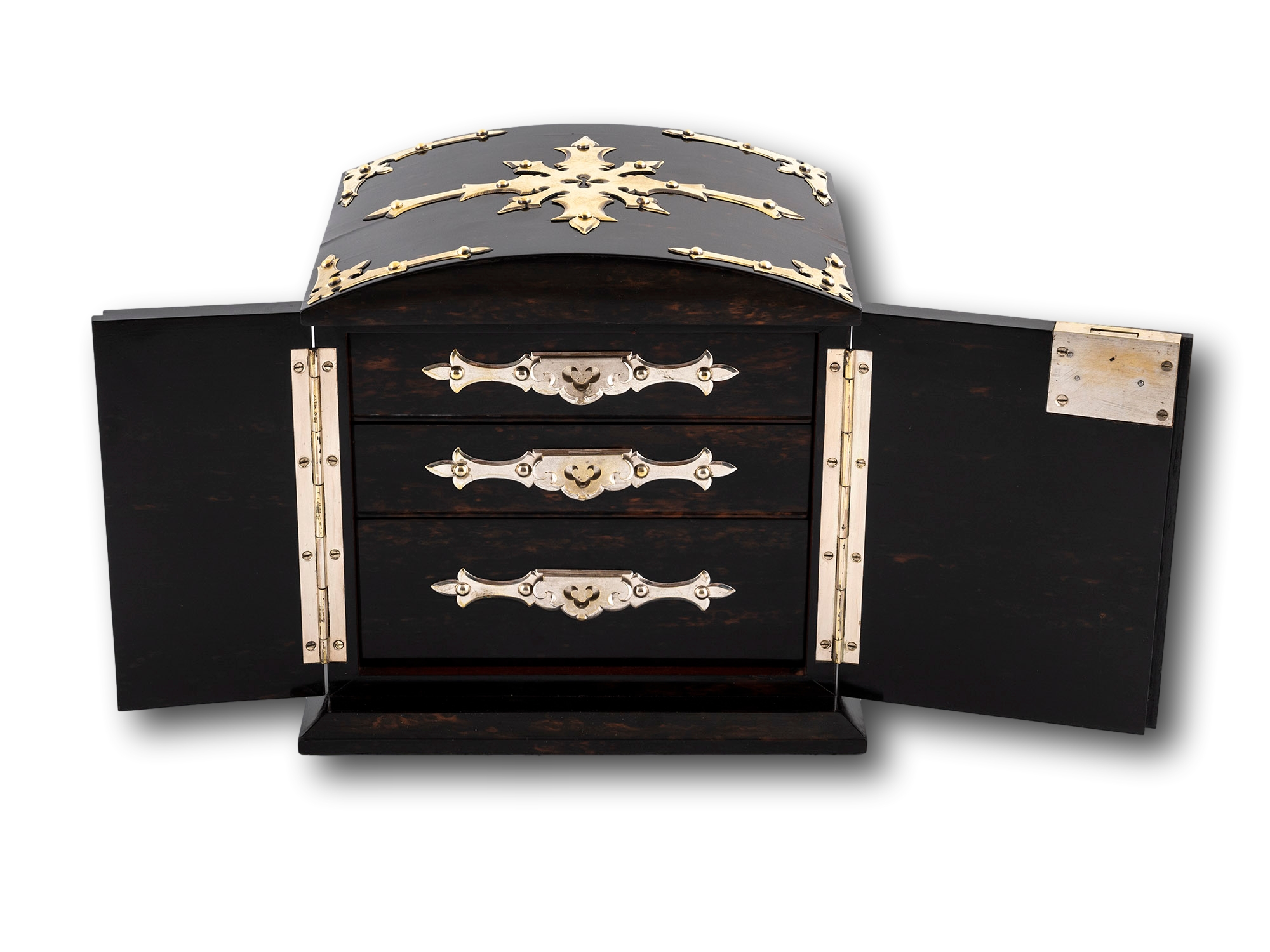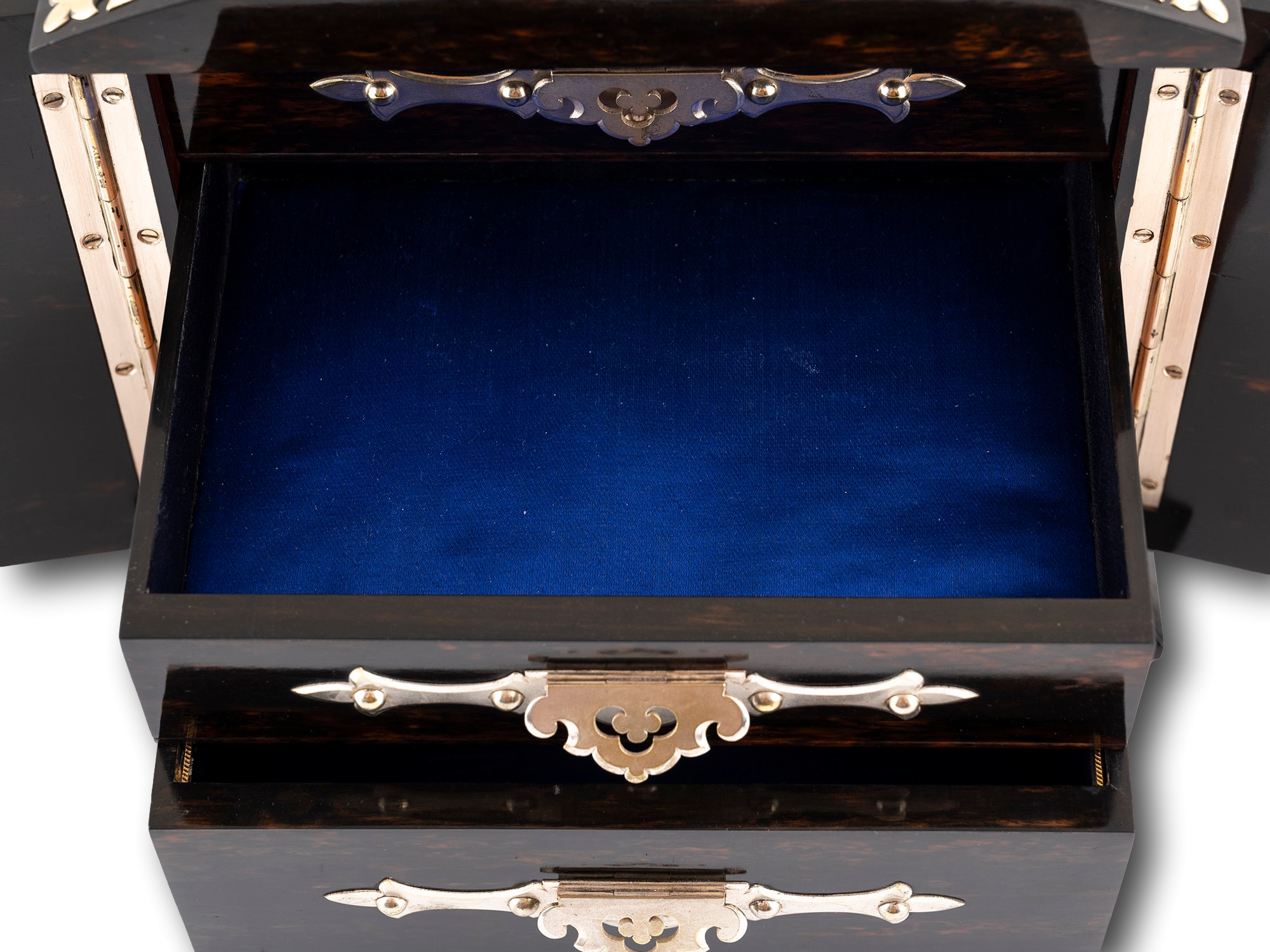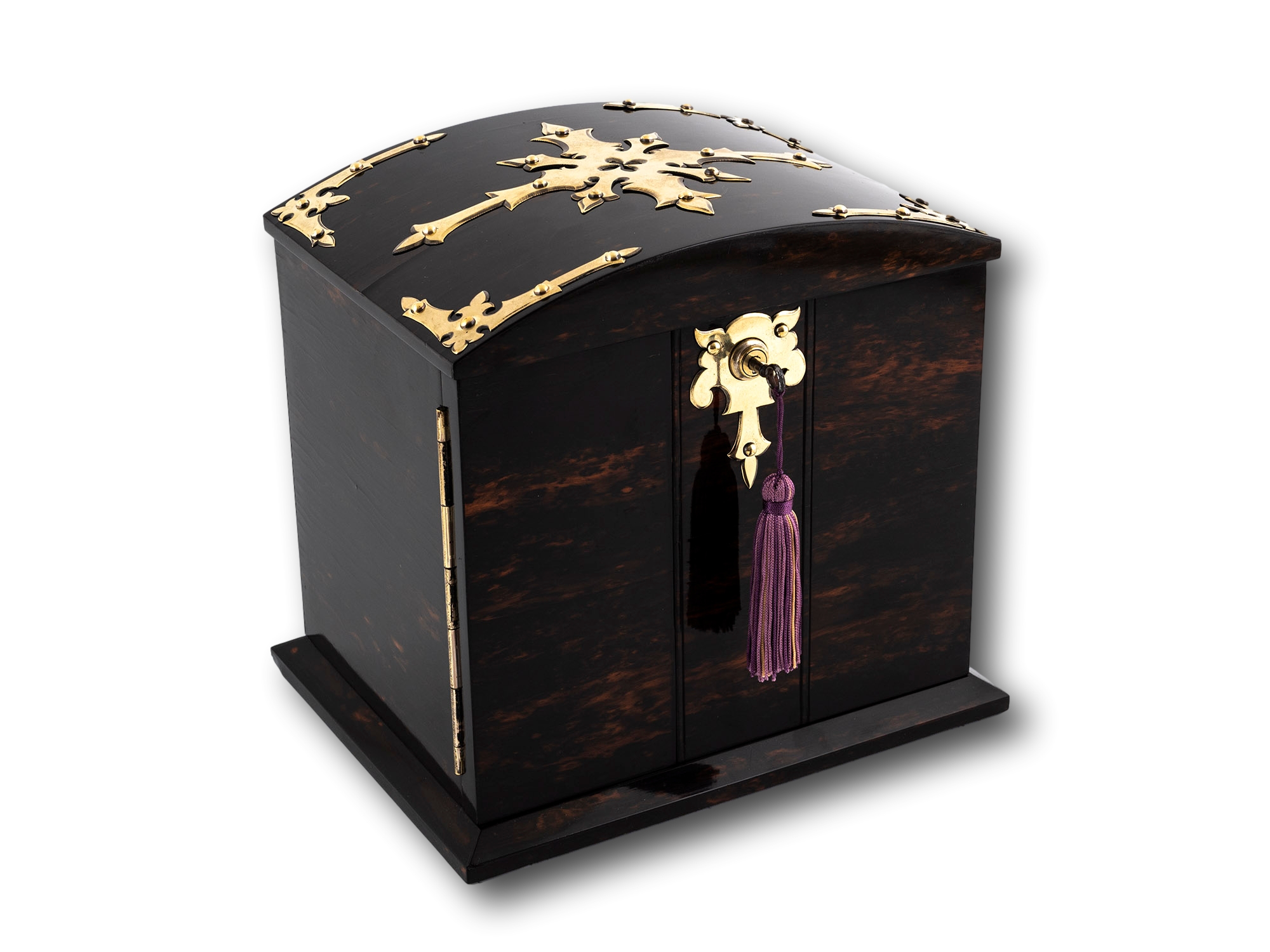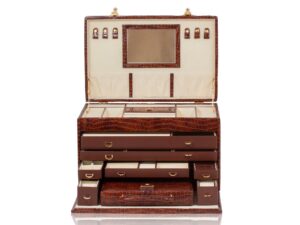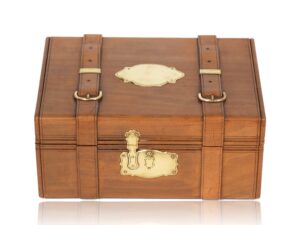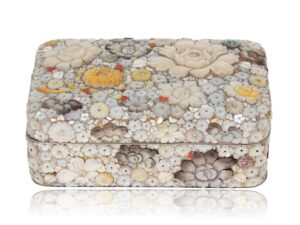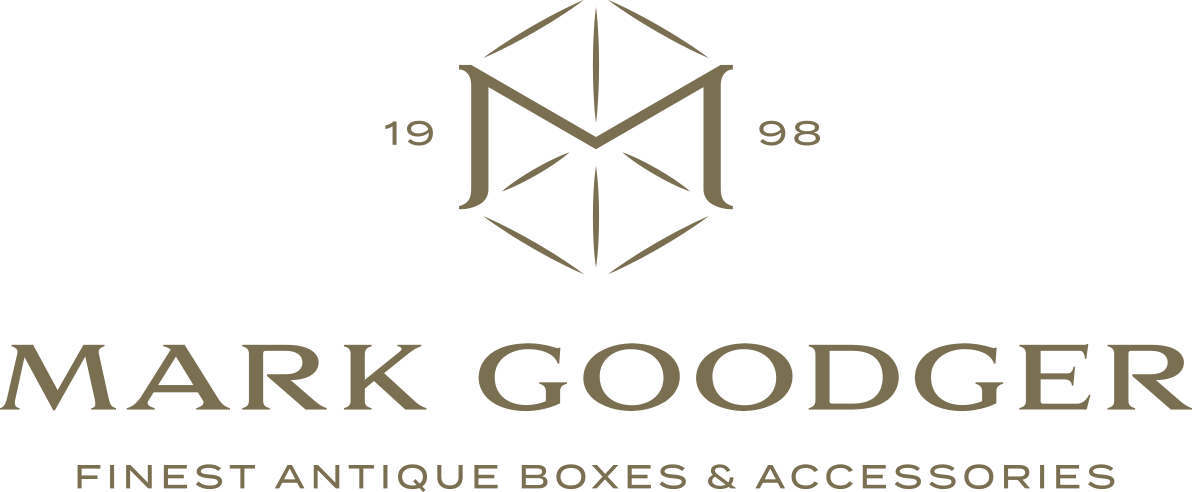Victorian Coromandel Jewellery Cabinet Betjemann & Son
SOLD
Veneered In Exotic Coromandel From our Jewellery Box collection, we are pleased to offer this Victorian Coromandel Jewellery Cabinet attributed to Betjemann & Son. The Jewellery Cabinet of square shaped veneered in exotic Coromandel wood with a plinth base and... Read More
Victorian Circa 1885
| Dimensions | 25 × 24 × 20 cm |
|---|---|
| Medium | |
| Country | |
| Year | |
| Period | |
| SKU | 501113TSXE |
Description
Description
Veneered In Exotic Coromandel
From our Jewellery Box collection, we are pleased to offer this Victorian Coromandel Jewellery Cabinet attributed to Betjemann & Son. The Jewellery Cabinet of square shaped veneered in exotic Coromandel wood with a plinth base and domed top finished with scrolling brass mounts. The front of the Jewellery Box is fitted with a circular escutcheon mounted inside a shaped brass plaque with quality brass rivets which matches the lid decoration. The Jewellery Box opens via the front with twin doors revealing a tiered three drawer cabinet veneered in Coromandel with fitted handles. Each drawer contains different partitions for storing your jewellery in various sizes lined in blue silk velvet. The top with a pocket watch holder, cufflink and/or ring cushion and further partitions for bracelets or watches. The second and third drawer with further larger storage finishing the box perfectly which sits on a solid Mahogany base. We have firmly attributed the box to renowned London firm George Betjemann & Sons due to the quality, shape, materials and finish, we are confident the piece is by Betjemann. The Box dates to the late 19th century during the Victorian period circa 1885.
Coromandel is a valuable wood found in India, Sri Lanka and South East Asia. It has a contrasting hazel-brown colour with black grain. It is a dense, heavy wood that is so popular it has been logged to extinction over the last few hundred years. This makes Calamander pieces even more special.
Mahogany is the name given to many types of tropical hardwood and can be found in Africa, India and South America, most of which are a red-brown colour with a fine, even grain. This makes it easily workable and gives it a durable finish which attributes to its popularity with many kinds of furniture.
Victorian, an era of British History corresponding approximately with the reign of Queen Victoria from the 20th of June 1837 until her death on 22 January 1901 however, there are arguments stating that the Victorian era is actually from 1820 until 1914 proceeded by Georgian era and followed by the Edwardian era.
George Betjemann started as an apprentice cabinet maker from a young age working for his Father in Law. In 1848, his two sons George William Betjemann and John Betjemann joined him under apprenticeships until 1846 when George William Betjemann started his own business with his two sons. In 1859 George moved to a new premises on Pentonville road, London. This was when the business became known as ‘Betjemann & Sons’. John Betjemann was grandfather of the later famous poet laureate Sir John Betjemann.
With every purchase from Mark Goodger Antiques, you will receive our latest catalogue, a Certificate of Authenticity, detailed care instructions for your chosen piece and an independent invoice (for insurance purposes) will be enclosed. As well as being protected by a no-hassle, money-back policy, your piece will be entirely insured during the shipping process to ensure the safety of your item.
Additional information
Additional information
| Dimensions | 25 × 24 × 20 cm |
|---|---|
| Medium | |
| Country | |
| Year | |
| Period | |
| SKU | 501113TSXE |
